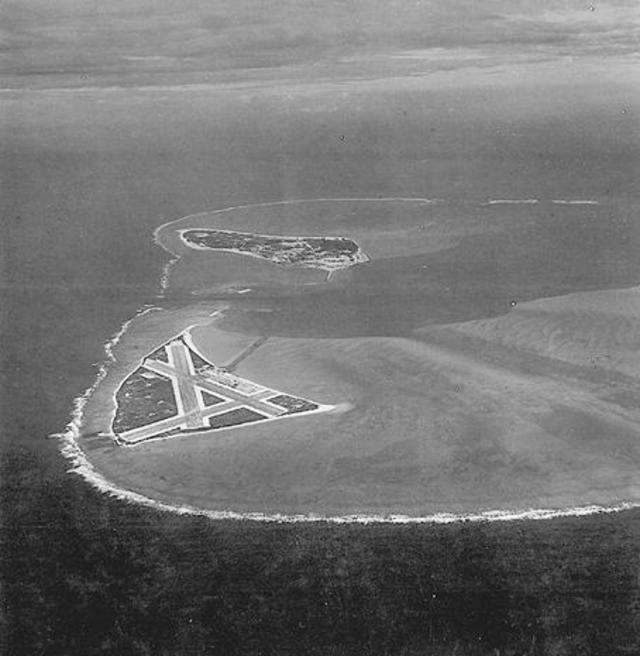

These Midway-based attacks were unsuccessful but added to the Japanese confusion and aided in the outcome of the battle. Earlier, strike aircraft consisting of Army Air Corps bombers, Marine scout bombers and Navy torpedo planes departed Midway to attack the Japanese carriers. airplanes took to the air from Midway to counter the attack but the Marine fighters suffered greatly. Before dawn, on June 4, the Japanese launched 108 aircraft, which attacked both Sand and Eastern islands, inflicting considerable damage. On June 3, Midway's aircraft spotted a part of the Japanese invasion fleet approaching. Meanwhile, the Marines, Navy and Army personnel on Midway worked furiously to strengthen their defenses. Admiral Nimitz ordered his forces, centered on three carriers, to sea to intercept the Japanese. Nimitz, Commander in Chief of the Pacific Fleet, learned that Japan was planning a massive raid on Midway in the spring of 1942.

Due to the breaking of most of Japan's JN 25 Naval codes, Admiral Chester W.

Centered on four aircraft carriers, the Japanese fleet of 162 warships and auxiliaries approached Midway in the first days of June.

Then, flush with victory after victory in the Pacific and southeast Asia, Japan prepared in the spring of 1942 to capture the Midway Islands, establish a toehold in the Aleutians, and draw out what was left of the U.S. The first Japanese attack on Midway occurred on December 7, 1941, when destroyers successfully shelled naval installations. Photo from National Archives, General Records of the Department of the Navy, 1798-1947 Historic image of Navy dive bombers (Dauntless SBD-3) during the attack on the Japanese fleet off Midway, June 4-6, 1942 In September 1941, the 6th Marine Defense Battalion replaced the 3rd Defense Battalion. They belonged to the 3rd Defense Battalion and promptly began constructing defenses. Marine detachment assigned to Midway arrived in September 1940. The civilian employees also began construction of land runways on Eastern Island. In 1939 the Navy established a partnership with several construction firms, which formed Contractors Pacific Naval Air Base for the construction of facilities for two patrol airplane squadrons on Sand Island. Navy contributed funds and the dredging increased in scope in preparation for a naval air station. Army Corps of Engineers to dredge an entrance channel between the islands, a harbor and seaplane runways in the lagoon as a civil works project in 1938. Because of this commercial enterprise, the U.S. Pan Am built a small hotel and flight facilities on Sand Island. The cable establishment gained company in 1935 when Pan American Airways' Clippers arrived at Midway and established weekly commercial flights across the Pacific. The Commercial Pacific Cable Company established a communications station on Sand Island. Navy assumed jurisdiction over Midway in 1903, and remained custodian of the atoll until 1996. The United States took formal possession of the unoccupied islands in 1867. Geographically, it is a part of the Hawaiian chain of islands, located 1,140 nautical miles from Oahu politically, it has never been a part of the state of Hawaii. The atoll's name is said to come from its location, midway between San Francisco and Tokyo. Midway is a coral atoll six miles in diameter with three islands-Sand, Eastern and Spit. The World War II Facilities at Midway are recognized for the historic role they played in a crucial World War II battle in the Pacific Theater of operations. Aerial view of Midway Atoll, Spit Island is in the foreground with Eastern Island in the distance-note the historic runways


 0 kommentar(er)
0 kommentar(er)
